Humans have enjoyed cheeses since antiquity. No one knows where the first cheese was made. Indeed, it probably wasn’t made at all but was a happy accident that occurred when someone discovered milk had turned into curds and whey. Societies all over the world make cheese, and these delicious dairy products have names that start with nearly every letter of the alphabet. Here are 13 cheeses that start with H.
1. Havarti
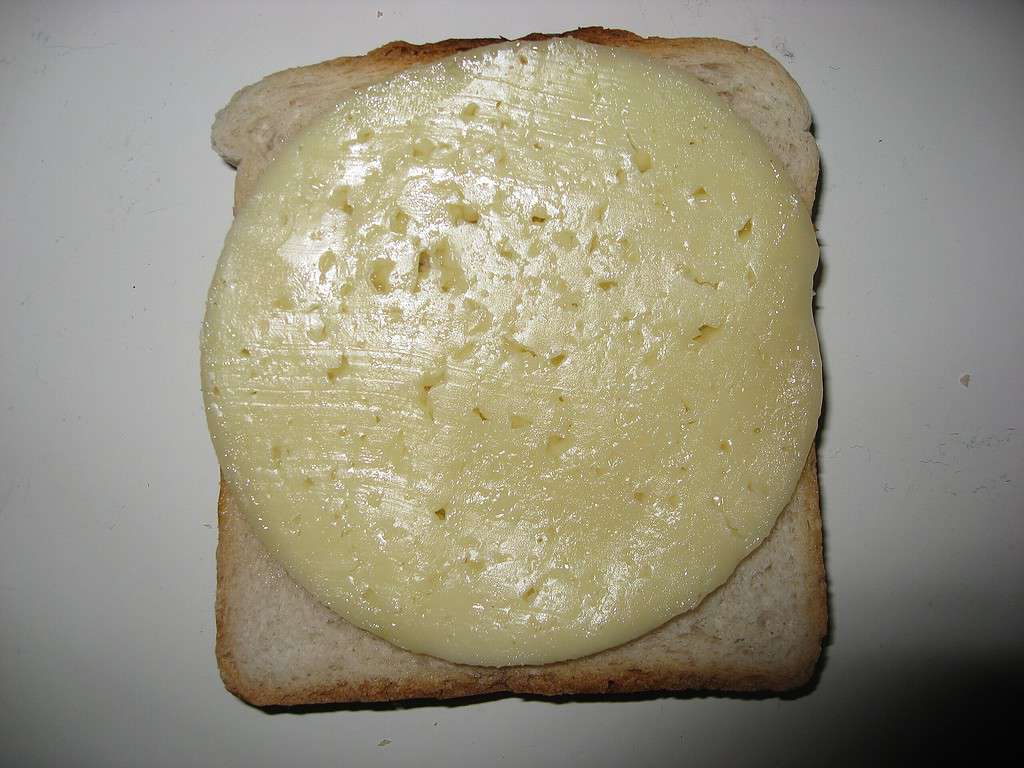
Cream and regular havarti cheese melt beautifully.
©Ulaek, CC BY-SA 3.0 – License
This delectable cheese that starts with H is from the town of Øverød in the region of Hovadstaden in the country of Denmark. It is made from cow’s milk, and like most cheeses the curds and whey are separated, and the curds are pressed into molds. The cheese is then left to ripen.
There are two types of havarti cheese: havarti and flødehavarti. Flødehavarti is made with ultra-pasteurized milk, which allows it to retain its whey proteins. Because of this, flødehavarti shouldn’t sit and ripen for a long period of time, as the proteins can give it an off taste. Original havarti is also a smear rind cheese, while flødehavarti isn’t. Smear rind cheese is washed from time to time with brine or mold. This gives it a distinctive taste.
Havarti cheese is a fairly new cheese and has only been made since 1921. It’s semi-soft, with a sweet, buttery taste and aroma. When left at room temperature, havarti softens, though it doesn’t get runny like brie cheese. Because of its texture, havarti is great to eat out of hand and melts beautifully.
2. Halloumi

This cheese that starts with H is delicious when it’s fried or grilled.
©Hmioannou, CC BY 3.0 – License
Halloumi is from Cyprus and is traditionally a blend of goat and sheep’s milk. Because it has a high melting point, halloumi is often fried or even grilled and used as a substitute for meat. This makes it perfect for dishes such as saganaki. Sometimes cow’s milk is used to create the cheese along with goat and sheep’s milk, though in small proportions. Halloumi is an old cheese that’s been made since the 4th century AD.
Like many other cheeses, halloumi uses rennet to curdle the milk, though acidic bacteria aren’t used to help it ripen. The production of the cheese is also unusual in that the curds are pressed and cooked in boiling whey for about a half an hour. After that, the cheese is stored in briny whey for 40 days or longer. This treatment contributes to its texture and possibly to the cheese’s trademark “squeak.”
3. Harzer
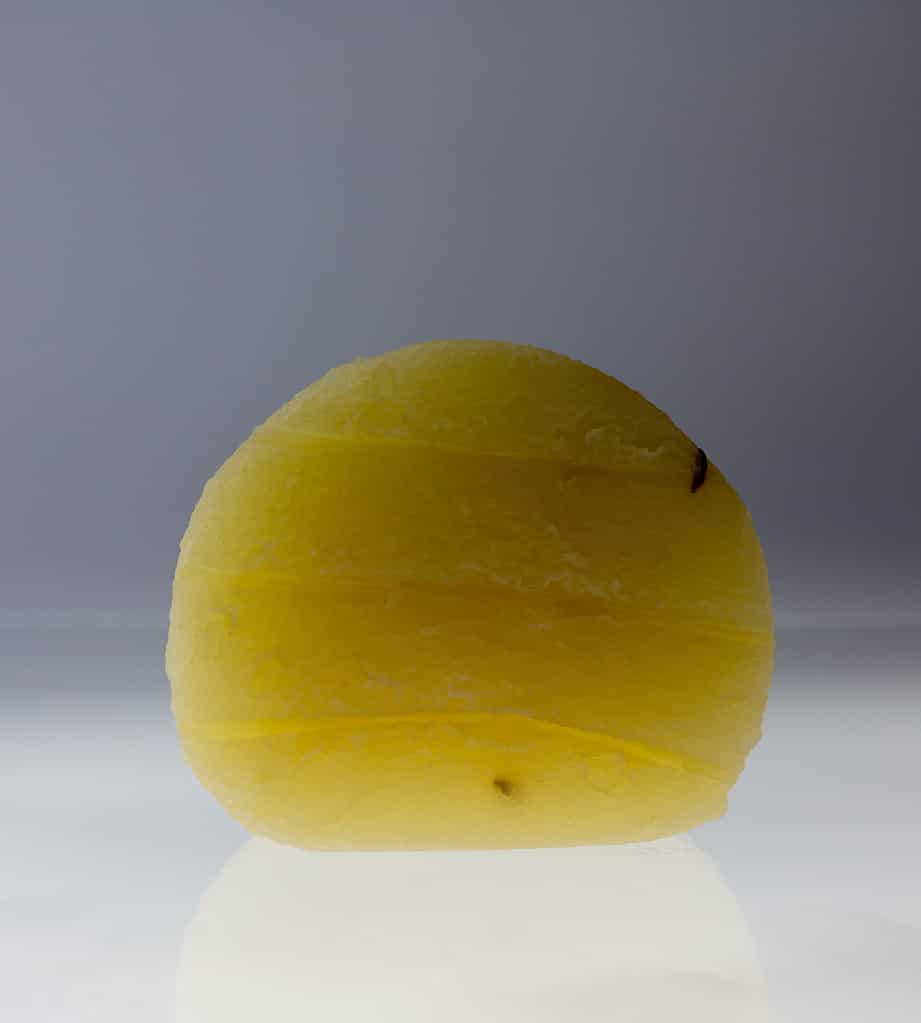
Another of the cheeses that start with H comes from Germany’s Harz Mountains.
©Elke Wetzig, CC BY-SA 4.0 – License
This strong-smelling and strongly flavored cheese is notable because it’s made from sour milk. It gets its name because it’s from the Harz Mountains of Germany. Although most Harzer cheese is flavored with caraway, there are different types. Some are made with white mold, while stronger flavored types are made with red mold. Small, round examples of Harzer cheese are called Taler or Handkäse, while cheese that comes in a cylinder is known as Stangenkäse. Sometimes discs of Harzer cheese are packaged as a cylinder. In that case, it’s called Harzer Rolle. Harzer is low in fat but high in protein.
4. Hirtenkase

The milk of cows brought down from the Alps at the end of summer is used to make hirtenkase.
©iStock.com/bluejayphoto
Another one of the German cheeses that start with H, hirtenkase is from southern Germany. It’s made from the milk of cows brought down from the Alps to the Allgäu area each September. A hard cheese, hirtenkase has a golden color, firm texture, surprisingly sweet flavor, and a pleasingly earthy aroma that reminds some people of orange peel. As a hard cheese, it also reminds some of Parmigiano-Reggiani cheese but isn’t quite hard enough to grate well. It goes well with a robust but sweet red wine such as Madeira or with a cold stein of beer.
5. Herve
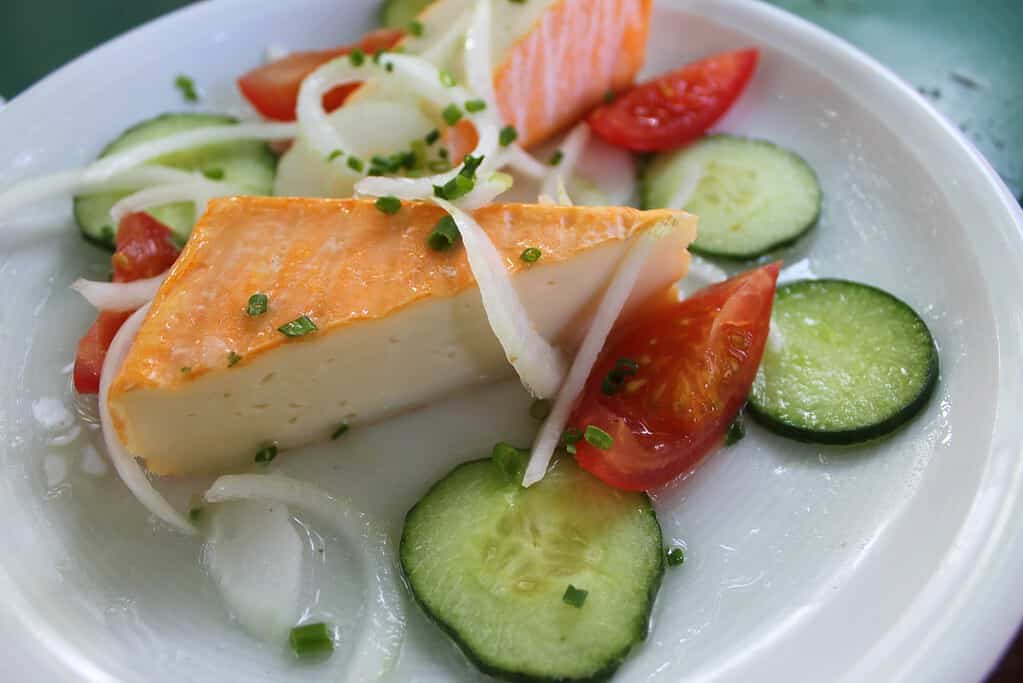
This pungent cheese is also called Limburger.
©Benreis, CC BY 3.0 – License
A cheese of the low countries and Germany, this cheese originated in the Duchy of Limburg, which is now in Belgium. Because of this, the cheese is called Limburger if it’s made in places other than Belgium. Whether limburger or herve, the cheese is famous for its powerful smell that’s been likened, frankly, to unwashed feet. The bacterium Brevibacterium linens is the reason for the stink. Herve cheese is sold as bricks.
Herve is made from cow’s milk. It’s a soft cheese with a washed rind that gives the coat a reddish-brown color. The paste of the cheese is yellow. After it’s processed it’s left to age for three months in a cellar that’s sometimes carved out of rock. Young herve cheese is firm, crumbly, and has a sweet taste. Aged cheese is spicy and so soft that it’s spreadable and used to make the famous Limburger sandwich.
This cheese has been made in Belgium since the 15th century and was first made in America in 1854. Interestingly, this was in Antwerp, New York.
6. Hermelín
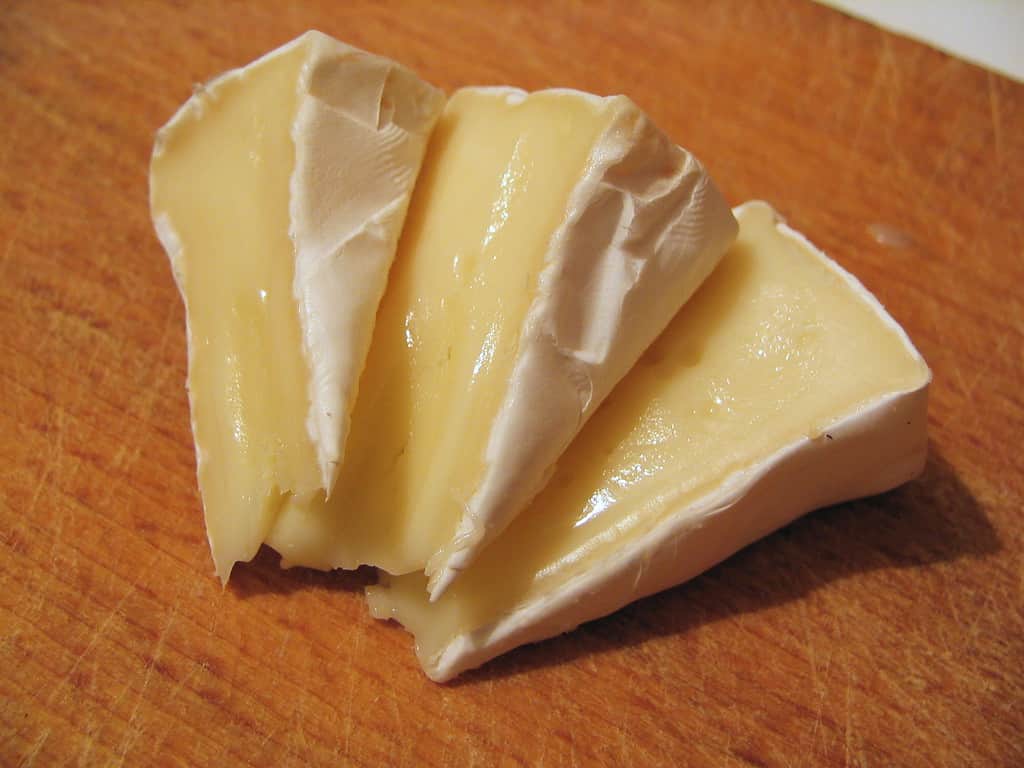
Nakládaný Hermelín is the Czech version of brie or camembert.
©Oldsoft, Public domain, via Wikimedia Commons – License
This Czech cheese also called Nakládaný Hermelín, gets its name from the ermine, a mustelid that lends its white fur to line the capes of royalty. Created in the 1920s, this cheese is the Czech version of camembert or brie, and its rind has a bloom of white mold. Its paste is creamy. Hermelín is often served marinated in olive oil and enhanced with herbs and spices. Popular in Czech pubs, it’s presented as a wheel to be cut into wedges. It’s sometimes dredged in breadcrumbs and deep fried or grilled or opened up and stuffed with onions and herbs and enjoyed with crusty bread.
7. Handkäse
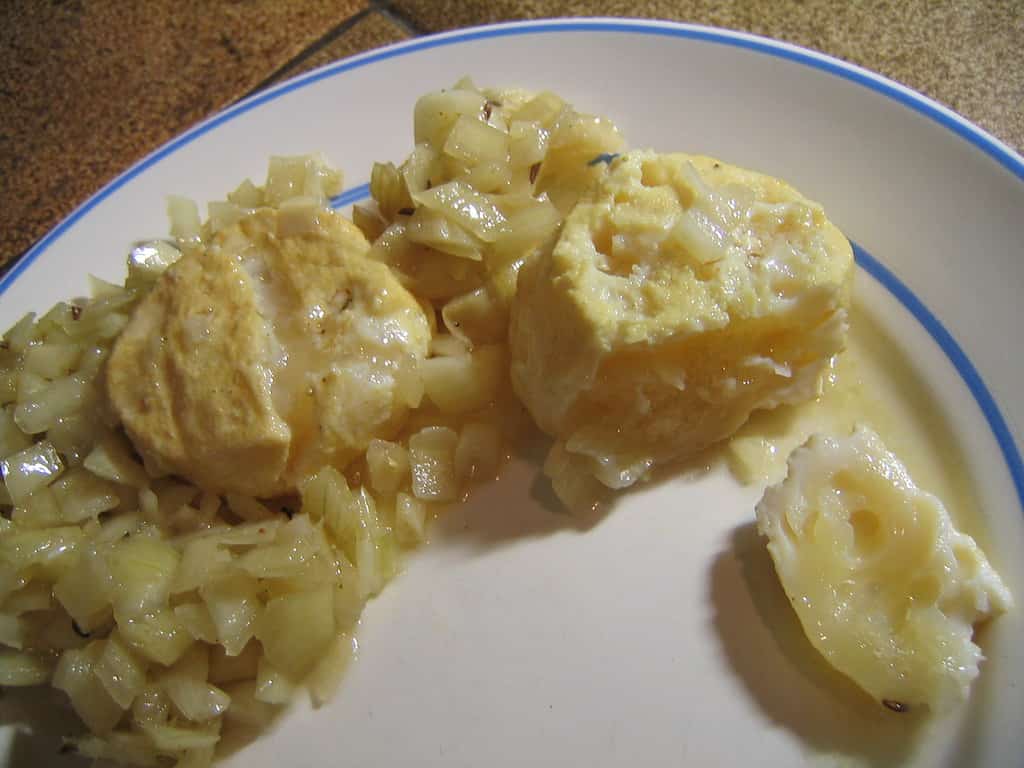
This cheese is made from sour milk and served with onions and caraway seeds.
©Dominic Schwöbel, CC BY-SA 3.0 – License
Another of the strong-smelling sour milk cheeses that start with H, handkäse gets its name because it was traditionally made with your bare hands. A specialty of the Hesse region of Germany, it’s often served with a topping of raw onions, caraway seeds, and a dry white wine. Connoisseurs rate the classiness of a restaurant by whether or not it serves the seeds in a pot beside the slices of cheese. These meals are often called Handkäse mit Musik. The Musik is either the intestinal gas that comes from eating raw onions, the sound of carafes of oil and vinegar clinking together or the bubbling of gases when the vinegar and oil are whisked together and used to marinate the cheese.
8, 9. Höfðingi and Hvítur Kastali
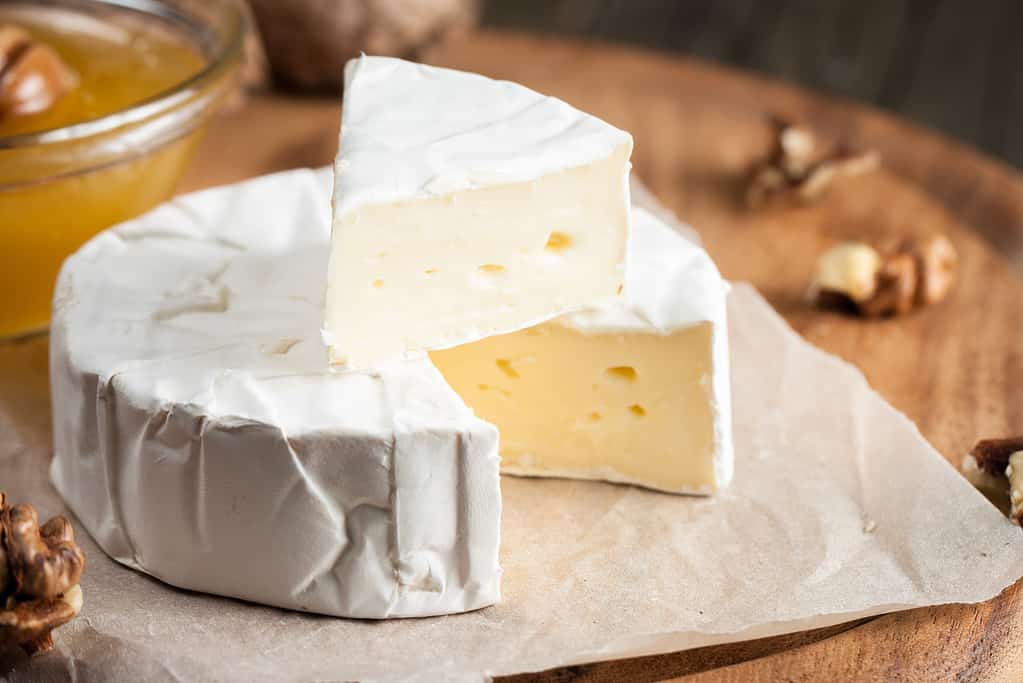
France’s brie cheese greatly resembles Iceland’s höfðingi cheese.
©CreatoraLab/Shutterstock.com
Both of these cheeses that start with H come from Iceland. Like French brie, höfðingi is creamy, with a white crust and a deliciously mild flavor. Hvítur kastali is another white cheese whose texture is described as buttery. These cheeses are made from pasteurized cow’s milk.
10. Hibernia
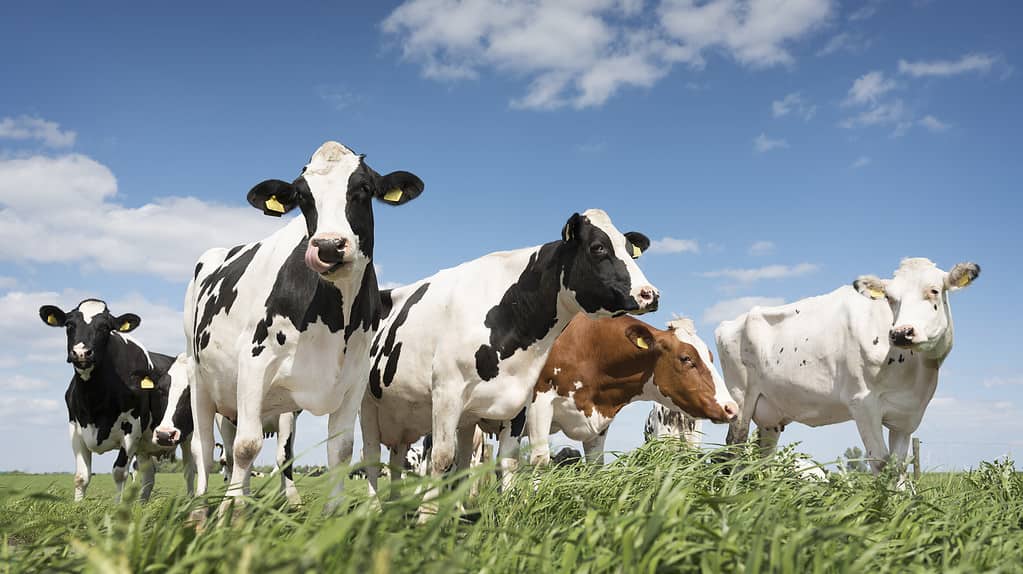
Ireland’s long grass-growing season gives Hibernia cheese its delicious flavor.
©ahavelaar/iStock via Getty Images
As its name says, this cheese is from Ireland. It’s made from raw cow’s milk and produced by Fermoy Natural Cheese of County Cork. The taste is described as nutty with undertones of pineapple. Irish cheeses in general are known for their flavor. Cows benefit from the Emerald Isle’s long grass growing season. Hibernia also goes well with Irish whiskey and ale.
11. Herrgårdsost

“Manor house cheese” comes from Sweden.
©–Holger.Ellgaard (talk) 16:26, 29 October 2008 (UTC), CC BY 3.0 – License
Herrgårdsost, whose name means “manor house cheese” in Swedish, is a mild, semi-hard cheese made from pasteurized, part skim cow’s milk. As its name suggests, it was first made in manor houses beginning in the 19th century.
The cheese is aged for as long as two years and develops eyes, much like Swiss cheese. The action of a bacteria called Propionibacterium freudenreichii is responsible for the holes. The cheese is washed with brine and then covered in wax. The resulting taste is described as both nutty and creamy.
12. Hushållsost
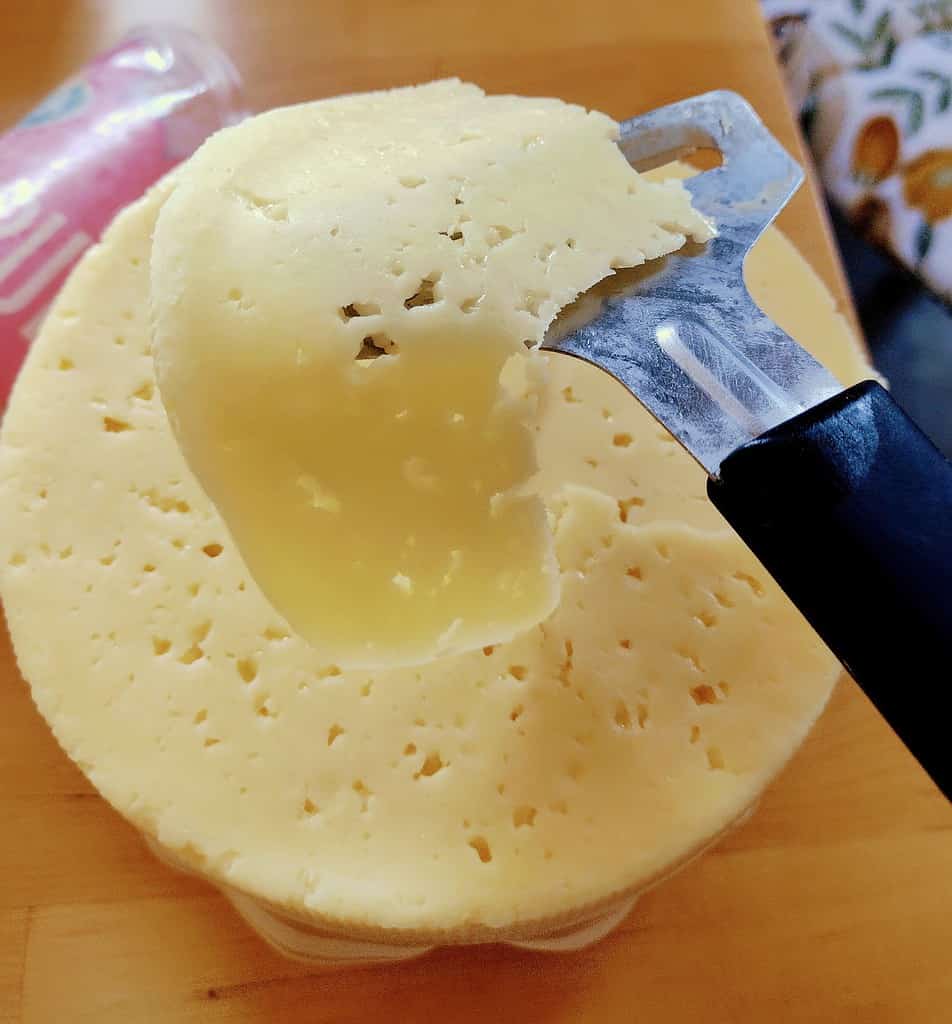
This cheese that starts with H is like herrgårdsost but has more holes.
©Grönmossan, CC BY-SA 4.0 – License
The name of this Swedish cheese means “household cheese.” Like herrgårdsost, it is mild if a bit sour and semi-hard. It has more holes than herrgårdsost but is made from whole milk, which gives it a high fat content. Hushållsost is Sweden’s most popular cheese, and 16,800 tons are eaten every year.
13. Humboldt Fog
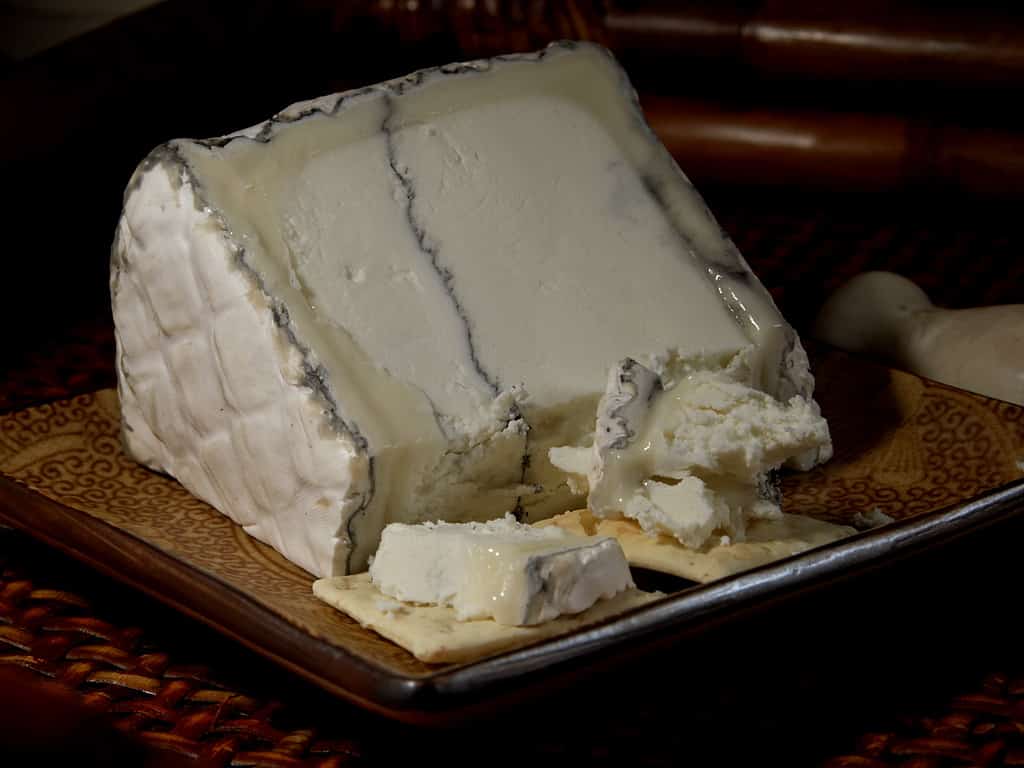
This cheese is soft in the middle and runny around the edges. You can see the layer of ash placed between the curds.
©Jon Sullivan, Public domain, via Wikimedia Commons – License
The quirky name of this American cheese comes from the way the fog rolls into California’s Humboldt Bay. Humboldt fog cheese is interesting because it’s mold-ripened and made out of pasteurized goat milk. Not only that, but it has a line of edible ash through its center with a bloom of white mold on the rind. The line results when the cheesemaker puts a layer of ash on a layer of curds then tops the ash with another layer of curds later on.
The core of Humboldt fog is crumbly like feta when it’s young, but as it ages it becomes soft-ripened and creamy. This core is enclosed by a shell that’s runny and has a stronger taste than the core.
The photo featured at the top of this post is © MaraZe/Shutterstock.com
Thank you for reading! Have some feedback for us? Contact the AZ Animals editorial team.






